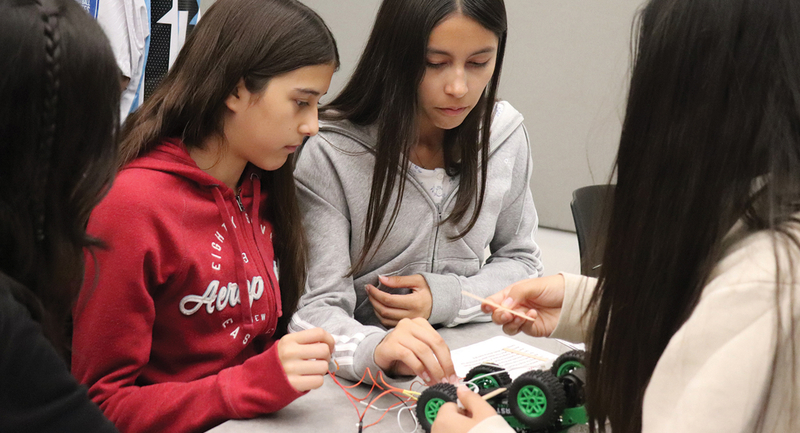How are you feeling about life during this pandemic? Are you fearful for your own well-being? Worried about what's coming next? Eager to do your best to get it right but uncertain about what "right" actually is? Well, this is pretty much what life on the autism spectrum feels like all the time—even with no pandemic. Now, take that intense, baseline apprehension, whip it up with an invisible, unpredictable, and uncontained pandemic, and it's a recipe for incapacitating anxiety.
Why So Anxious?
Students on the spectrum tend to think in rigid, concrete ways. They generally feel safest when their lives are clearly structured and highly predictable. That's why teachers of students on the autism spectrum find that specific schedules is indispensable in the classroom. When school follows a daily routine and adheres to a set of reliable rules, it provides a fundamental level of comfort for students on the spectrum.
But even then, for these students, anxiety is always buzzing just below the surface. In an effort to manage it, they may also depend upon another set of internal rules associated with school that you might not even notice.
Here are some examples:
The school day always begins with the principal announcing over the public address system, "Gooooooooood morning, Aardvarks!"
Learning happens only in Room 173 in the school building, or in an orderly sequence of specific rooms in the school building.
Lessons are consistently delivered by a teacher in a classroom.
The school day proceeds according to a specific schedule.
Masks are for Halloween. Period.
COVID-19 is causing violations of rules like these, and the "new normal" isn't at all what our students expect or need it to be. For example, now:
The school day starts and ends—and starts again—at different times with no announcements and no aardvarks.
Learning happens through the computer—and in the living room!
Mom, Dad, or Grandma is acting like a teacher.
The schedule is changing all the time.
Halloween has come and gone, and everyone is still wearing masks?
With this much cognitive dissonance, students feel anxiety 24/7. Most of the crucial anchors that made school a reliably safe haven have floated away, even when students are physically in the classroom. There are new rules to learn about being outside and around others, and there's a new intensity among adults as they enforce those rules. Students face new seating on the bus and in the classroom, staggered start and dismissal times, one-way hallways, reduced class sizes, revolving schedules, enforced social distancing, plexiglass partitions, and mandated mask-wearing and hand-washing. For most students, it's just new and different; for students on the spectrum, it's disorienting and overwhelming.
Beyond the school day, extracurricular activities that used to help anchor the week—such as social skills groups, applied behavior analysis (ABA) therapy, or swimming lessons—may have vanished from students' schedules. Periodic incentives, like a trip to the Lego store or a visit to the library, may be inconsistently or entirely unavailable.
Worst of all, as a result of the virus, some students may have lost parents, grandparents, aunts, uncles, siblings, babysitters, or others who were very important to them. For students on the spectrum, piled upon the devastating grief of losing a loved one is the unbearable chaos upended caregiving arrangements.
Clinging to Comfort
In an effort to find something certain they can cling to, your students may perseverate on dates, as in "What day is this virus going to be over?" or "Just tell me when school is going to be back to normal." Others who understand more may perseverate on data, as in "What percent positivity rate will make school shut down again?" Since dates and data are scientifically determined and objectively reliable, students on the spectrum often rely on them to make the unknown feel more predictable.
While some students struggle to adapt to the inherent wrongness of wearing face masks on non-Halloween days, others embrace to the consistency of the new rule, especially as so many old rules have fallen away. These students may comply eagerly with wearing masks; so much so, in fact, that they may become rule enforcers, approaching peers, adults, and even strangers to insist that they wear a mask and wear it properly.
You may find that your students' heightened anxiety manifests in the form of incessant and repetitive questioning, irritability, or inability to focus. Be aware that a disorganized external environment fuels a disorganized internal environment. Maximize the use of organizational tools like specific schedules, graphic organizers, planning templates, sample outcomes, and other supports described in Decoding Autism and Leading the Way to Successful Inclusion (Boroson, 2020). Check and double-check for understanding to make absolutely sure that the new rules, systems, and expectations are clear. As you contain the free-floating anxiety, you'll see coherence and comprehension flourish.
New Sensations
If your students are not complying with mask-wearing rules, consider sensory stress as the culprit. In addition to the perceived wrongness of the idea of wearing a mask all day every day, the actual wearing is fraught with distress for many students on the spectrum. Most of these students have highly responsive sensory systems, and masks present a variety of sensory challenges, such as the unnatural feeling of paper or fabric on the face, the heat and condensation caused by breathing into an enclosed space, the pressure of the wire on the nose, and the pull of the strap around the ears or head.
Try differently textured, layered fabrics (e.g., paper, cotton jersey, flannel, or satin); various ways to secure them (e.g. around the ears or around the head; using elastic, string, or ribbon; or even attached to a baseball cap), and assorted shapes (e.g., wide fabric headbands or gaiters or balaclavas made of polyester or spandex).
In terms of social distancing, visual-spatial challenges may make it impossible for students on the autism spectrum to retain an accurate visualization of what six feet of separation looks like. Even under the best of circumstances, these students may be space invaders. During socially distant times, they need especially clear and concrete indicators of where to sit, where to stand, and which side of the hallway to walk on.
Home Sweet School
Distance learning in a pandemic is stressful for most parents and guardians, as they also try to manage their own employment, social isolation, acute health risk, and financial insecurity. But since independent learning is more difficult for students on the spectrum than for others, their parents and guardians must take an especially active role in supporting their children's education.
Independent online learning may be a non-starter for these students for a variety of reasons. Many have difficulty with the demands of remote auditory processing, transcribing from the screen, and maintaining attention and visual focus. Many are distracted by the incongruity of trying to learn academic content on a screen that usually hosts Moana or Minecraft or by spending the so-called "school" day in a room that also contains a puppy and a cabinet full of cheese doodles. School no longer feels like school, and home doesn't exactly feel like home anymore. The anxiety, sensory, and other challenges described here are far more acute, protracted, and profound than they are for your neurotypical students.
With their equilibrium utterly upended, the day-to-day with students on the spectrum is usually loud, insistent, and relentless, requiring frequent or even constant attention and intervention by parents, guardians, and caregivers. Even as you are pulled in many directions, hold on to the fact that that these students—and their supporters—are going to need more guidance, more instruction, more structure, more patience, more 1:1 contact, and more encouragement than your other families do, just as is the case in conventional circumstances.
Staying Apart Together
As your school or district reimagines creative configurations of student groupings—such as revolving in-person cohorts, "learning pods," or "quaranteams"—consider that it has taken disability advocates more than 50 years to change paradigms so that a plurality of students on the spectrum today spend at least 80 percent of their day in general education or inclusion classrooms (U.S. Department of Education, 2019). These improvements are still a work in progress. Though easing the way is a crucial priority for these times (and you may find it easiest to create academically homogeneous student pods or teams), I ask you to work to uphold the progress that has been made toward inclusion.
This pandemic has compromised our health and safety, encroached upon many of the freedoms we took for granted, and stolen beloved friends and family members worldwide. Please don't let it take the hard-won dignity that students on the spectrum gain through living and learning among their typically developing peers. In this unprecedented time, our focus as educators must be on undiscriminating kindness and patience as we support and lean on each other, six feet apart.







